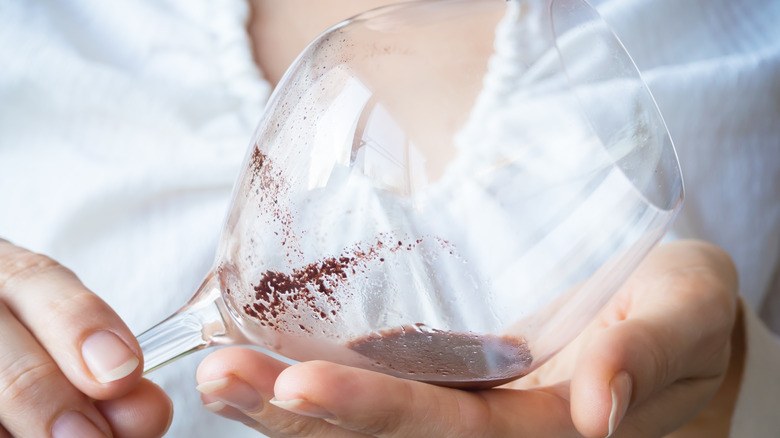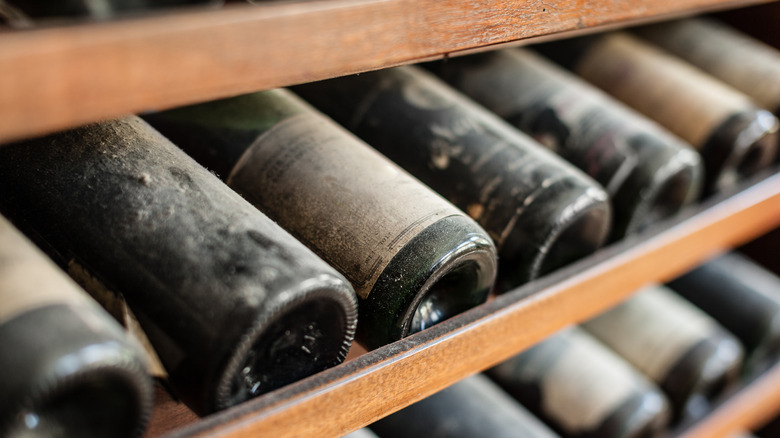Is It Okay To Drink The Sediment In The Bottom Of Your Red Wine Bottle?
If you've ever decanted or reached the end of a bottle of red wine, you've no doubt taken note of the tiny flecks of dark sediment collected at the base of the bottle. Your first instinct might be that something has gone wrong with your wine, or that it might not be safe to drink. However, you would be wrong — instead of tossing that perfectly good bit of wine down the drain, leave it alone. The sediment that collects a the bottom of the bottle is completely okay to consume.
Just as the dregs of coffee and loose-leaf tea sometimes find their way to the bottom of their respective pots, so too does the organic matter in wine. Sediment in red wine is not indicative of poor quality, however — far from it. You find sediment in your red wine simply because of the fact that natural components in the wine have sunk to the bottom of the bottle while the wine ages. The longer it has been aged, the more sediment tends to collect.
So, while the sediment is completely harmless both to the wine and whoever drinks it, it doesn't exactly look appetizing. Understanding what exactly is going on in the bottle might help in determining whether or not you choose to keep the dregs as they are or filter them away.
What exactly is the sediment in my red wine?
The sediment found in the bottom of the red wine is a form of lees. There are two types of lees: The first type is called gross lees. These are the collected mass of dead yeast, grape skins, seeds, stems, and tartrate crystals. The red wine is primarily fermented in this gross lees, providing the wine with its characteristic tannic flavor. These are removed before bottling, but there is still another type of lees present in the wine.
Fine lees, on the other hand, are the sediment you encounter at the bottom of the bottle. These tend to settle and separate while the wine ages, forming a silky layer of sediment at the bottom of the bottle. And because red wines are not traditionally stabilized in the way whites and rosés are, the sediment is allowed to build up in the bottle. Again, the longer the bottle is allowed to sit and age, the more sediment there will be. Reds like Bordeaux varieties and Cabernet Sauvignon tend to contain a fair amount of sediment.
So, while sediment is in no way harmless to drink, you might not always want to. The solution to this is to simply decant your red wine through some nice cheesecloth or a fine mesh sieve. It will catch the sediment and leave you with a perfectly clear decanter of red wine.

